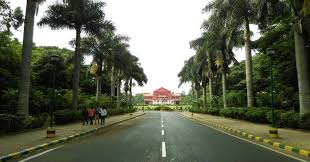
Lalbagh Botanical Garden: Bangalore’s Historic Green Sanctuary
Lalbagh Botanical Garden, located in the southern part of Bangalore, is one of the most iconic and historic gardens in India. Spanning over 240 acres, Lalbagh is renowned for its rich botanical diversity, scenic beauty, and cultural heritage. Originally commissioned by Hyder Ali in 1760 and later expanded by his son Tipu Sultan, the garden was designed in the style of Mughal gardens and includes exotic plants imported from Persia, Afghanistan, and France.
Today, Lalbagh houses more than 1,800 species of plants, including rare and endangered varieties. It is also home to centuries-old trees, tranquil lotus ponds, and expansive lawns. One of the major attractions is the Glass House, inspired by London’s Crystal Palace, which hosts the famous biannual flower shows on Independence Day and Republic Day, attracting thousands of visitors.
In addition to its horticultural beauty, Lalbagh serves as a vital center for botanical research and environmental education under the management of the Directorate of Horticulture, Karnataka. The garden also supports local biodiversity by providing habitat for various birds, butterflies, and small animals. A highlight is the ancient Lalbagh Rock, estimated to be over 3,000 million years old, offering a glimpse into the Earth’s geological past.
Lalbagh is not just a garden but a living monument that reflects Bangalore’s ecological and cultural identity, offering a peaceful retreat for nature lovers, students, and tourists alike.
Cubbon Park: The Green Heart of Bangalore
Cubbon Park, located in the central administrative area of Bangalore, is one of the city’s most cherished green spaces. Spanning over 300 acres, the park serves as a natural haven amidst the urban sprawl and plays a vital role in maintaining the city’s ecological balance. Established in 1870 by Sir John Meade and later named after Sir Mark Cubbon, the then British Commissioner of Mysore, the park reflects colonial-era landscape design blended with native flora.
Cubbon Park is home to more than 6,000 trees representing around 100 species, both indigenous and exotic. These include towering gulmohars, rain trees, bamboo groves, and ficus varieties, which contribute to the park’s lush canopy and biodiversity. The green expanse offers a tranquil space for morning walkers, joggers, nature lovers, and families, acting as a recreational and cultural hub.
Apart from its natural beauty, Cubbon Park houses several iconic structures including the State Central Library, with its striking red facade, the High Court of Karnataka, and the elegant Seshadri Iyer Memorial Hall. Statues of prominent historical figures such as Queen Victoria and Sir Mark Cubbon add to its historical charm.
The park is also a hotspot for bird watchers, fitness enthusiasts, and photographers. Its well-laid paths, shaded walkways, and vibrant gardens make it a popular escape from the city’s hustle.
Cubbon Park stands as a living symbol of Bangalore’s commitment to green spaces, heritage preservation, and urban well-being.



Comments (2)
jpbose2016@gmail.comsays:
June 23, 2025 at 9:34 amWow!! I really plan to visit this place again and again. Because these parks are attractive to the visitors. I visit this park many times.
jpbose2016@gmail.comsays:
June 23, 2025 at 9:34 amyes. Thank you